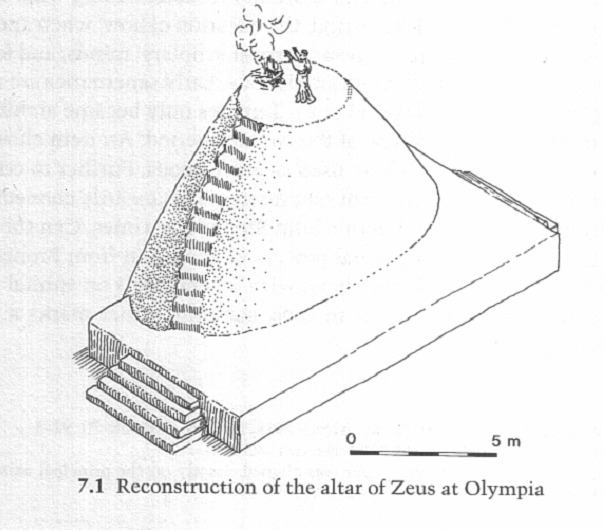In ancient Greek society, the altar was not only a feature of a temple setting, but it was principal in animal sacrifice (an activity that designated an area as being sacred to the gods). Today altars from antiquity were often perceived as being built out of stone, however, one of the most recognized, was that of the altar of Zeus at Olympia. It is believed that the altar was not constructed of stone, but organic material, such as bones and ash that accumulated from hundreds of years of sacrifices to the god Zeus.
One of the only literary accounts we have, that describes the structure, is from Pausanias in the second century CE. He recorded that the altar was over 22 feet (about 7m) high. The altar was never recovered by the German archaeologists who excavated at the site of Olympia. Its location is based upon modern plans that are purely hypothetical.
Sources: Whitley, James. The Archeology of Ancient Greece. United Kingdom: Cambridge University Press, 2001.

image source: Whitley 2001
